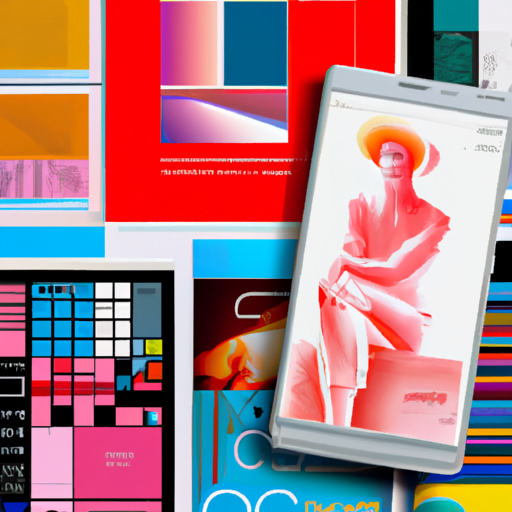
-
Table of Contents
- Augmented Reality for Environmental Graphics and Wayfinding
- The Power of Augmented Reality in Environmental Graphics
- Examples of AR in Environmental Graphics and Wayfinding
- 1. AR Wayfinding at Airports
- 2. AR Museum Guides
- 3. AR Navigation in Shopping Malls
- Case Studies: Successful Implementation of AR in Environmental Graphics
- 1. AR Wayfinding in Hospitals
- 2. AR Navigation in Public Transportation
- The Benefits of AR in Environmental Graphics and Wayfinding
- Conclusion
Augmented Reality for Environmental Graphics and Wayfinding

Augmented Reality (AR) has emerged as a powerful tool for enhancing user experiences in various domains. One area where AR has shown immense potential is in environmental graphics and wayfinding. By overlaying digital information onto the physical environment, AR can provide users with real-time guidance, information, and interactive experiences. In this article, we will explore the innovative user interfaces for AR/VR applications in environmental graphics and wayfinding, and discuss their benefits, examples, and case studies.
The Power of Augmented Reality in Environmental Graphics
Environmental graphics play a crucial role in guiding people through complex spaces such as airports, shopping malls, and museums. Traditionally, static signs and maps have been used for wayfinding, but they often lack interactivity and real-time information. AR can revolutionize environmental graphics by providing dynamic and personalized guidance to users.
With AR, users can simply point their smartphones or wear AR glasses to see digital overlays on their surroundings. These overlays can include directional arrows, labels, and even interactive elements like videos or 3D models. By integrating real-time data, AR can inform users about the current status of facilities, such as restroom availability or parking space availability.
AR can also enhance accessibility for people with disabilities. For example, visually impaired individuals can use AR to receive audio cues and haptic feedback to navigate through spaces. AR can also provide multilingual support, allowing users to view information in their preferred language.
Examples of AR in Environmental Graphics and Wayfinding
Let’s explore some real-world examples of how AR is being used in environmental graphics and wayfinding:
1. AR Wayfinding at Airports
Many airports have started implementing AR wayfinding systems to help passengers navigate through terminals. For instance, Gatwick Airport in London introduced an AR app that guides passengers from check-in to boarding gates. The app uses AR markers placed throughout the airport to provide real-time directions and information.
2. AR Museum Guides
Museums are leveraging AR to enhance visitors’ experiences and provide interactive information about exhibits. The Smithsonian American Art Museum in Washington, D.C., offers an AR app that allows visitors to explore artworks in a new dimension. Users can point their smartphones at paintings to see additional information, videos, and even virtual tours.
3. AR Navigation in Shopping Malls
Shopping malls can be overwhelming to navigate, especially for first-time visitors. AR can simplify the process by providing indoor navigation and personalized recommendations. For example, the Mall of America in Minnesota has an AR app that helps shoppers find stores, locate amenities, and even discover exclusive deals.
Case Studies: Successful Implementation of AR in Environmental Graphics
Let’s delve into some case studies that highlight the successful implementation of AR in environmental graphics and wayfinding:
1. AR Wayfinding in Hospitals
The Cedars-Sinai Medical Center in Los Angeles implemented an AR wayfinding system to improve navigation for patients, visitors, and staff. The AR app provides step-by-step directions to various departments, waiting areas, and amenities. It also offers real-time updates on wait times and appointment reminders.
2. AR Navigation in Public Transportation
The Massachusetts Bay Transportation Authority (MBTA) introduced an AR app called “Transit AR” to assist commuters in navigating the subway system. The app overlays digital information onto the physical stations, guiding users to the correct platforms and exits. It also provides real-time train schedules and service alerts.
The Benefits of AR in Environmental Graphics and Wayfinding
AR offers numerous benefits in the realm of environmental graphics and wayfinding:
- Enhanced user experiences: AR provides interactive and personalized guidance, making navigation more engaging and enjoyable.
- Real-time information: AR overlays can display up-to-date information about facilities, events, and services.
- Improved accessibility: AR can assist people with disabilities by providing audio cues, haptic feedback, and multilingual support.
- Reduced confusion and stress: AR wayfinding systems simplify navigation in complex environments, reducing frustration and anxiety.
- Cost-effective updates: AR allows for easy updates and modifications to environmental graphics without the need for physical replacements.
Conclusion
Augmented Reality has the potential to revolutionize environmental graphics and wayfinding by providing dynamic, interactive, and personalized experiences. From airports and museums to shopping malls and hospitals, AR is being successfully implemented to enhance navigation and information dissemination. The benefits of AR in this domain are vast, including improved user experiences, real-time information, enhanced accessibility, reduced confusion, and cost-effective updates. As AR technology continues to advance, we can expect even more innovative user interfaces and applications in the field of environmental graphics and wayfinding.
